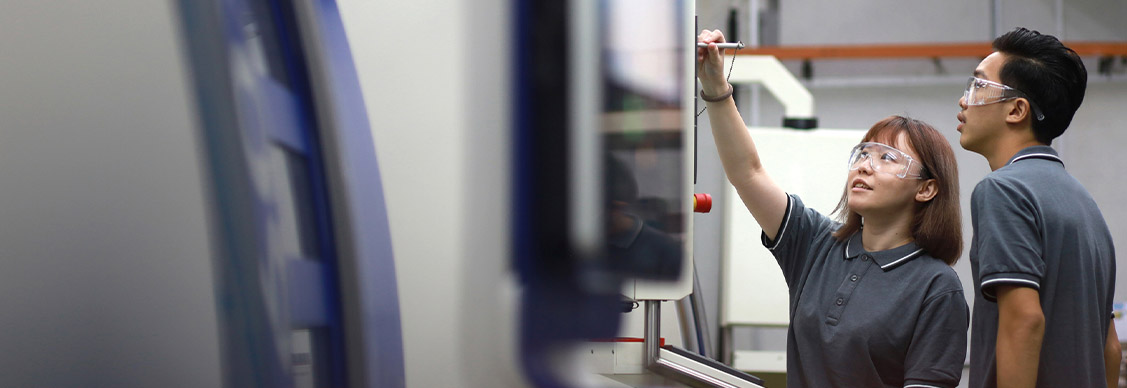New manufacturing hotspots emerge
Amid a diversification push, Southeast Asia and India are luring manufacturers from China
For decades, China has dominated global manufacturing. However, companies are increasingly diversifying their operations elsewhere, wary of overreliance on a single source.
This diversification drive is fueling a boom in foreign direct investment (FDI) for manufacturing in Southeast Asia and India, with both vying to become the next manufacturing powerhouse.
While China holds the lion’s share of manufacturing FDI in the region, the gap is narrowing. Indonesia raked in $28.7 billion in investment last year, up $4 billion from the year earlier. Vietnam’s FDI in manufacturing climbed over 30% to hit $23.5 billion, according to JLL.
“One of the key drivers behind this shift is the desire to diversify and create more resilient supply chains,” says Peter Guevarra, Director, Research Consultancy, Asia Pacific, JLL.
Spreading their manufacturing base beyond China offers companies multiple advantages, Guevarra says. “It reduces their vulnerability to geopolitical tensions, while potentially boosting supply chain efficiency by locating closer to Southeast Asia, one of the world's fastest-growing regions.”
Looking for more insights? Never miss an update.
The latest news, insights and opportunities from global commercial real estate markets straight to your inbox.
Major industries take the lead
High-growth industries, such as renewable energy and electric vehicles (EVs), have been spearheading the move away from China, according to Michael Ignatiadis, Head of Manufacturing Strategy, Asia Pacific, JLL.
“For instance, Thailand, a long-established automotive powerhouse, is now experiencing a new wave of investment in EV production fueled by global demand,” says Ignatiadis.
Take Chinese EV giant BYD, which pumped 17.9 billion baht ($500 million) to set up a new facility in Thailand to produce 150,000 EVs annually starting from this year. In January, Chinese car manufacturer Great Wall Motor also began manufacturing its Ora EV in its factory in Rayong, Thailand.
EV production continues to accelerate while the Thai government ramps up efforts to lure automakers as part of its 2030 target to convert 30% of its annual automotive production to zero-emission vehicles.
Leveraging incentives and agreements
Government incentives, in the form of cash grants and tax exemptions, are a major draw for manufacturing firms, Ignatiadis says.
A prime example is India’s production-linked incentive scheme (PLI) to boost the broader economy and capitalize on the global manufacturing shift. Last year, the government expanded the scheme, doling out incentives of up to 180 billion rupees ($2.2 billion) to attract manufacturers in six new sectors, on top of the 14 sectors previously covered under the scheme.
Beyond national incentives, free trade agreements like the ASEAN Free Trade Area (AFTA) add another layer of benefit for manufacturers, Guevarra says.
“Such agreements eliminate tariffs, allowing for trade to flourish within the region,” says Guevarra. “This provides added impetus for companies to consider shifting manufacturing from China.”
Choosing the right location
The search for an ideal location is influenced by a multitude of factors including labor productivity, which can vary significantly.
“It's difficult to directly compare productivity between different areas,” says Ignatiadis. “For instance, productivity in China tends to be substantially higher compared to India or Southeast Asia.”
However, rising costs for land, construction, and labor in China are further tipping the scales in favor of other emerging markets, where costs are often nearly half as much.
Manufacturing wages in India are less than half of China’s, with workers earning $2 per hour compared to China's $5.58, JLL data shows.
Investment Opportunities
“India and Southeast Asia offer a compelling combination of lower labor costs compared to China, and access to a vast, combined talent pool for diverse manufacturing needs,” says Guevarra.
Other factors are also gaining weight in the decision-making process for manufacturers’ relocation strategies, according to Ignatiadis.
“Typically, a manufacturer prioritizes factors like location, talent availability, and capital requirements when relocating to a new market,” he says. “But now, the domestic market size and the potential to tap into new customer bases are also emerging as decisive factors for manufacturers choosing a new hub.”
聯繫 Michael Ignatiadis
Head of Manufacturing Strategy, Asia Pacific, JLLWhat’s your investment ambition?
Uncover opportunities and capital sources all over the world and discover how we can help you achieve your investment goals.




